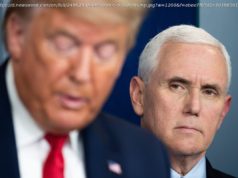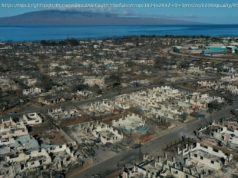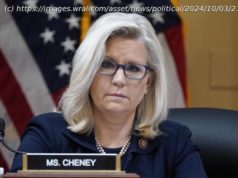It plunges the Trump administration into uncharted legal territory since no president has sought to modify monuments in more than half a century
SALT LAKE CITY – President Donald Trump on Monday drastically scaled back two national monuments established in Utah by his Democratic predecessors, the largest reduction of public lands protection in U. S. history.
Trump’s move to shrink the Bears Ears and Grand Staircase-Escalante national monuments by more than 1.1 million acres and more than 800,000 acres, respectively, immediately sparked an outpouring of praise from conservative lawmakers as well as activists’ protests outside the White House and in Utah. It also plunges the Trump administration into uncharted legal territory since no president has sought to modify monuments established under the Antiquities Act in more than half a century.
His decision removes about 85 percent of the designation of Bears Ears and nearly 46 percent of that for Grand Staircase-Escalante, land that potentially could now be leased for energy exploration or opened for specific activities such as motorized vehicle use.
The 1906 Antiquities Act, enacted under President Theodore Roosevelt, empowers the president to declare as national monuments any landmarks, structures and other “objects of historic or scientific interest” on land owned or controlled by the federal government. Roosevelt established 18 monuments, including the Grand Canyon in Arizona and Devil’s Tower in Wyoming. Most presidents since then have designated additional monuments. Congress has created others.
Trump told a rally in Salt Lake City that he came to “reverse federal overreach” and took dramatic action “because some people think that the natural resources of Utah should be controlled by a small handful of very distant bureaucrats located in Washington. And guess what? They’re wrong.”
“They don’t know your land, and truly, they don’t care for your land like you do,” he added. “But from now on, that won’t matter.”
“Your timeless bond with the outdoors should not be replaced with the whims of regulators thousands and thousands of miles away,” Trump said. “I’ve come to Utah to take a very historic action to reverse federal overreach and restore the rights of this land to your citizens.”
Roughly 3,000 demonstrators lined up near the State Capitol to protest Trump’s announcement. Some held signs that said, “Keep your tiny hands off our public lands,” and they chanted, “Lock him up!” A smaller group gathered in support, including some who said they favor potential drilling or mining there that could create jobs.
Conservatives have long sought to curb a president’s unilateral power to safeguard federal lands and waters under the law, a practice that both Democrats and Republicans have pursued since it was enacted under Theodore Roosevelt. The issue has been a particular flash point in the West, where some local residents feel the federal government already imposes too many restrictions on development and others, including tribal officials, feel greater protections of ancient sites are needed.
Even before Trump made the announcement as part of a day trip to the state, National Cattlemen’s Beef Association Craig Uden was hailing the resized designations. While grazing has continued on both monuments, as well as on others, Uden said ranchers could not have greater input into how they are managed.
“We are grateful that today’s action will allow ranchers to resume their role as responsible stewards of the land and drivers of rural economies,” he said.
Republicans at the president’s rally applauded him and his deputies for heeding their concerns. “President Trump listened to us,” Utah House Speaker Greg Hughes said. “We are not a flyover state.”
Conservation advocates and tribal representatives have for months been preparing legal briefs that aim to block the monument changes in federal court.
Doug Wheeler, a partner at the firm Hogan Lovells who represents the Conservation Lands Foundation, Utah Diné Bikéyah and other groups, said the “watershed” moment on this issue came with the 1976 Federal Land Policy and Management Act. “Congress made very clear, as a matter of law, that they intend to delegate only that which has been expressly delegated in terms of management of federal lands,” he said – which would mean a president can establish a monument under the Antiquities Act but not “rescind or substantially reduce” a site, he added.
Despite this legal uncertainty, Trump and his deputies have worked to address the concerns raised by Utah politicians such as Republican Sen. Orrin Hatch and executives in the mining, ranching and oil and gas industries. In April, he signed an executive order instructing Interior Secretary Ryan Zinke to review more than two dozen monuments, and he tailored the document so it would include Grand Staircase-Escalante, which Bill Clinton designated in 1996.
In August, Zinke submitted a report to the White House – obtained by The Washington Post but still not released publicly – that called for reducing at least four sites and changing the way at least a half-dozen others are managed. In addition to Grand Staircase-Escalante and Bears Ears, which Barack Obama designated a year ago, Zinke recommended downsizing Oregon’s Cascade-Siskiyou and Nevada’s Gold Butte national monuments.
Zinke held public events at multiple locations, but the review decision-making process was largely contained to a handful of top staffers at Interior and the White House. Zinke’s aides have only had minimal consultations with Bureau of Land Management field office staffers in Utah, according to individuals who spoke on the condition of anonymity for fear of retaliation.
While both Utah monuments have drawn criticism, they have simultaneously boosted local tourism. Grand Staircase-Escalante also has spurred significant scientific discoveries.
Grand Staircase’s Kaiparowits Plateau ranks as one of the most important examples of the Mesozoic Era, when dinosaurs roamed the area, according to Society of Vertebrate Paleontology President David Polly. About a dozen institutions are conducting expeditions there at any given time, and somewhere between 75 percent and 80 percent of the plateau has yet to be explored.
Bears Ears, by contrast, is best known for the tens of thousands of relatively intact archaeological sites and petroglyphs within its boundaries. Some date from the ancestral Pueblo era, and many tribal members continue to visit the area on a regular basis to conduct rituals as well as to gather herbs and firewood.
A senior White House official, who spoke on the condition of anonymity to discuss internal deliberations, said the push to change the monument designations was driven by Hatch, House Natural Resources Committee Chairman Rob Bishop, R-Utah, and Zinke.
Hatch has raised the issue of the two Utah sites repeatedly with both the president and his eldest son, not just during the 2016 campaign but during his visit to the Oval Office on Trump’s fifth day in office.
Trump “really likes” Hatch, the White House official said, because he supports his agenda, defends him on TV, praises his children and has a sense of humor.
Home
United States
USA — mix Praise and protests after Donald Trump drastically downsizes two national monuments in...






